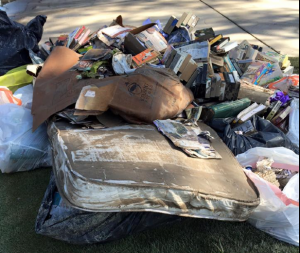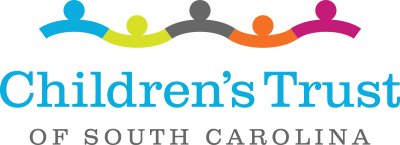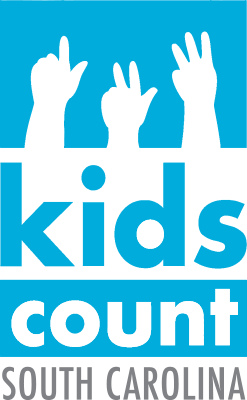Children’s Trust offers a list of tips for parents and children as they navigate the potentially dangerous conditions they may encounter in the coming days and weeks.
An important part of the mission for Children’s Trust, and its affiliate program Safe Kids South Carolina, includes keeping children safe from accidental and unintentional injury.
After the devastating storm that dropped so much rain across our state, we would like to express our heartfelt sympathy for the flooding victims as well as our concern for families trying to stay safe in the aftermath of the floods.

As South Carolina families work to recover from the devastating floods, this is a familiar sight in many neighborhoods.
- Remain calm. Although your situation may be difficult, the calmer you are, the less frightened your children will be.
- Explain to your children in clear terms what has happened and reassure them. Tell them of the need to listen carefully to instructions and do as you say.
- Keep children away from affected areas around your home and yard, and find someone to assist with them if you’re working on getting things back to normal. It’s too difficult to clean up and watch your kids at the same time. Create an understanding of which adult is responsible for the safety of the children and ensure that person is alert and watching them at all times.
- Flooding can change familiar places, like yards, walkways, roads and fields. Avoid walking through floodwater. It might be deeper than you think. Standing water is a drowning hazard, even if it’s shallow and your children know how to swim.
- Floodwater can be contaminated with dangerous substances. It also can be electrically charged due to downed or underground power lines.
- If you and your children unexpectedly find yourselves walking through unsafe areas, tell them to keep their hands on their hips to avoid touching anything dangerous.
- Keep your children a safe distance from fast-moving water. Even just six inches of it can knock them off their feet.
- Children should stay out of the way of emergency and recovery workers so they can do their jobs.
- Remember the rules of safe sleep, especially if you are in transition. Babies under one year of age should always sleep alone, on their backs and in their own sleep space free from blankets, cushions, toys and other choking and suffocation hazards. Playards, such as a Pack ‘N Play, are acceptable, portable sleep areas.
- If children are old enough to understand, talk to them about potential hazards. They can help you look out for things such as frayed wiring, mold, and broken objects as well as rodents, insects, snakes and other creatures displaced by the flood. Make sure kids don’t crawl or play under things that might still contain contaminated water or debris. Very young children should avoid playing directly on wooden floorboards or any damaged tile floors if possible due to the risk of injury from raised nails or sharp edges on tiles.
- Make sure children stay warm and dry. If their clothing is damp, find a dry change of clothes to put them in as soon as possible. Don’t let them sleep on wet bedding.
- If your children have rubber boots and other waterproof clothing, put it on them. These garments can keep them dry and protected.
- Give your kids plenty of safe-to-drink fluids to keep them hydrated. Bottled water and juice are good choices as they’re unlikely to be contaminated. Don’t give children any drinks or foods that have come into contact with floodwaters, even if they remained unopened.
- Keep contaminated toys and other possessions away from your children until you’ve had a chance to disinfect them properly. Pick up any objects or debris that children could trip over. Take special note of areas that are slick where kids could fall and hurt themselves.
- Pay attention to your children if they notice unusual noises or smells that could indicate a hazard. Don’t ignore their observations.
- If children have allergies or breathing difficulties such as asthma, keep them away from mold, which can irritate their chest, eyes, nose and throat. If a child has a wound that has punctured skin, see a doctor as soon as possible.
- Affected clothing, bedding and other soft/fabric articles should be put on a hot wash (the highest temperature indicated on manufacturer’s instructions). If your machine has a sanitize setting, use it.



